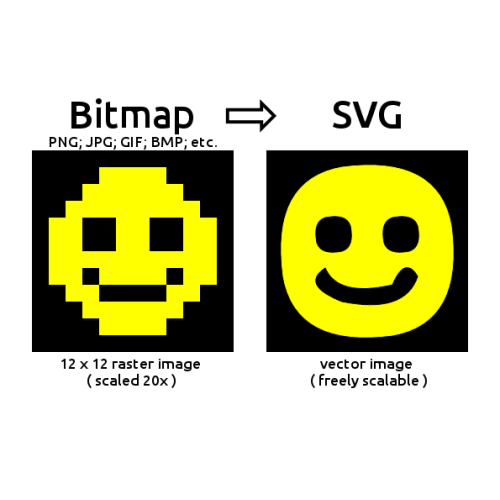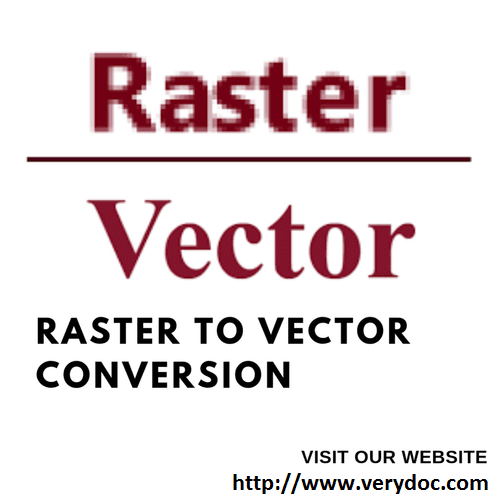

- #Free raster to vector converter how to#
- #Free raster to vector converter portable#
- #Free raster to vector converter software#
- #Free raster to vector converter professional#
- #Free raster to vector converter free#
#Free raster to vector converter how to#
Below is a simple step-by-step guide on how to convert to a vector.
#Free raster to vector converter software#
Vector tracing requires software tools to convert elements of a pixel-based raster image into a series of mathematically plotted lines and shapes–the data required for a vector file.ĬorelDRAW provides the tools you need to vectorize an image. Vectorizing an image is commonly known as vector tracing.

While vectorizing highly detailed photos may not always be practical, you can create usable vector images by extracting the best aspects of the image. This makes the file usable in your design and more practical for multifunctional applications. Often, as a vector designer, it’s necessary to convert a raster image asset into a vector format.
#Free raster to vector converter portable#
Large files can limit storage and sharing ability and require enhanced computer processing speeds, which make high-quality raster images challenging to work with.Īlternatively, when you use a vector image format, there is much less data to store because images are converted to mathematically-based formulas, creating much smaller and portable files.
#Free raster to vector converter professional#
That’s why professional photographs tend to be huge files higher quality means more pixels. Raster files tend to have large file sizes because the image data is stored as millions of pixels per image. While these image files are common, there are some limitations. Some of the most common raster image formats are: Scalable vector graphics (SVGs) are also required for print and cut machines, such as the Cricut personal laser cutter, allowing the machine to read and execute the file information accurately.Īs a designer, you’ll work with a variety of file formats. Embroidery machines, for example, require vector images to configure a map of stitches properly. With the vector format, your client can use the same design file for large projects, including billboards and banners, and small projects like apparel embroidery and business cards.Įven when resizing isn’t required, there are other applications where only vector graphics are compatible. Using a Vector format allows you to create striking images that are scalable with zero loss in quality. Why Convert from Raster to Vector?īefore jumping into the process of how to vectorize an image, let’s quickly re-examine the benefits of using vectors. When life gives you raster images, here is what you need to know about vectorizing them. The mathematical proportions allow scalability without losing image quality, making vector images best suited for most graphic design applications. Vector graphics, on the other hand, store the same data as a set of mathematically defined points, lines, or shapes. This loss of image quality comes from the file type, which stores image data as pixels. In addition, this process of conversion can be very.
#Free raster to vector converter free#
Raster images can be used in many scenarios, but can become pixelated or blurry when resized. We also offer you our free trials to be sure before you invest your money and where you are investing into. What does it mean to vectorize an image? It’s a simple file conversion, but to help you better understand the process, we’ll break down the two categories of image file formats. That’s when you’ll need to know a little more about the process of vectorizing an image. If you’re lucky, it will be a compatible file, but the format you’re given to work with often needs a little tweaking. But sometimes, a client asks you to incorporate existing files into your design. When starting from scratch, it’s generally easy to design in a vector file format. Now, just press File - Export As - PDF, SVG or EMF.Vectorizing Images: Why and How to Vector TraceĪs an aspiring graphic designer or illustrator, you know the importance of having crisp, clear, and versatile image files. When the result looks well, press the OK button to confirm the vectorization. You can also enable or disable Noise reduction (it is appropriate for natural photos). Set the Number of colors to tell Photopea, how many colors should the result have. When the vector result does not look perfect, you can improve it by changing settings. You can zoom in and out with a mouse wheel, and move the preview by dragging it (both previews are zoomed and moved simultaneously). Here, we can see two previews: the original raster image on the left side, and the new vector image on the right side. Press File - Open, and open your raster image. Vectorization (or image tracing) can be done online for free. How can we do it faster? Converting Raster Graphics to Vectors Recreating such image by hand can take a lot of time. Often, we see images, that were originally made as vector graphics, but are only available as a PNG or JPG file.


 0 kommentar(er)
0 kommentar(er)
